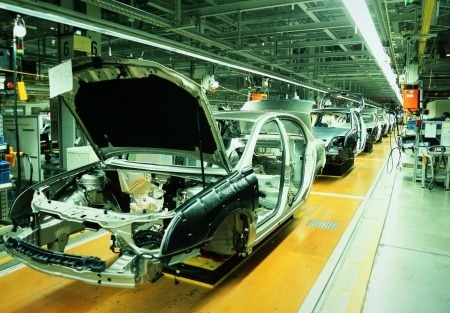There’s a lot of political noise lately about jobs and especially manufacturing jobs. So what’s realistic and what’s the story with all this? We found a couple of articles that provide clues (links at the end).
Most of us involved in manufacturing know of the good old days when the US was king of the world, manufacturing jobs were plentiful and paid well with generous benefits. All that was due in large part to the auto (and oil) industry. Something like 11 of the 20 most profitable companies were either auto or oil in the mid-1950’s. Even the 2 biggest tire manufacturers were close to the top 20 level.
Good trivia question’s answer: What company was the first billion dollar profit maker? Answer-GM in 1956.
Now, of course, technology companies dominate our economy. 7 of the 20 most profitable include Apple at #1 and then Google, Microsoft, Amazon, Facebook, Intel, Oracle, and Cisco. However, direct employment with these firms is markedly different that those from the auto companies of the 1950’s.
And how does employment with a) the big 3 auto companies of the 1950’s and b) the big 3 tech companies of today compare? In 1956, for example, the 3 Detroit auto companies’ number of employees was approximately 927,000 versus 180,000 for the big 3 techies in 2016.
And here’s another interesting fact about all this. Between the late ‘40’s and late ‘60’s, the peak of the US auto industry, Detroit LOST more than 130,000 manufacturing jobs, mostly to automation. This was before any significant global outsourcing occurred, and before Japan became a major factor in automotive and other major manufacturing markets. The effects of automation of course, continues and indicates a real trend in manufacturing employment since those peak years.
The 2 “big 3” groups are different in many key areas. Among the more significant are these two:
-Auto companies and their suppliers were concentrated in and around Detroit. While tech headquarters are near San Francisco, they have outsourced far more to subcontractors, no longer close, but global. One source notes modern companies try to keep especially lower wage workers off their own balance sheets. Clearly, this is a major change from the 1950’s.
Consider Ford’s Rouge River plant compared to today’s tech world. Completed in the late ‘20’s, “The Rouge” was the epitome of vertical integration along with 100,000 employees. Iron ore arrived; cars left. Now much of OEM manufacturing is outsourced and such a totally integrated heavy manufacturing facility is but a distant memory.
-The auto industry’s gigantic employment created broad-based prosperity. In contrast, the tech big 3’s wealth goes to a much smaller population. The American economy these days seems to operate such that the skilled and already rich make huge amounts of money. And, of course, manufacturing employment is less than in the 1950’s and very different in what’s required of today’s workers.
Yet there is some good news. The Reshoring Institute is an excellent source of information about global manufacturing employment trends–(https://reshoringinstitute.org/). Their 2016 report indicates that more than 338,000 manufacturing jobs have been brought back from offshore since the manufacturing employment low of 2010. So is this a flash in the pan or a sign of a hopeful future?
Harry Moser, the Reshoring Institute’s founder, highlighted these factors from the Reshoring Institute’s 2016 Data Report:
- Proximity to customers was the leading factor for returning manufacturing. Other important factors include government incentives, skilled workforce and cheap energy.
- Top regions are the southeast and especially Texas. The midwest’s strong industrial base is also attractive.
- Foreign direct investment is the #1 factor in relocated manufacturing into the US; even greater than reshoring.
- 2017 appears to be even more positive than 2016!
So what all this says is that US manufacturing is very different than during the golden era post WWII. Yet US manufacturing is strong and appealing to those considering moving their manufacturing to the US. After all, we have lots of buying customers along with other advantages!
If you are enjoying good economic conditions, remember Proficient Sourcing (Click here for a listing of most of our capabilities) exists to help with finding excellence in suppliers for parts and assemblies. We are ready whenever you are; (513) 489-5252 is the number.
This newsletter’s information came from 2 sources:
-
www.metalcenternews.com July, 2017 page 4.


